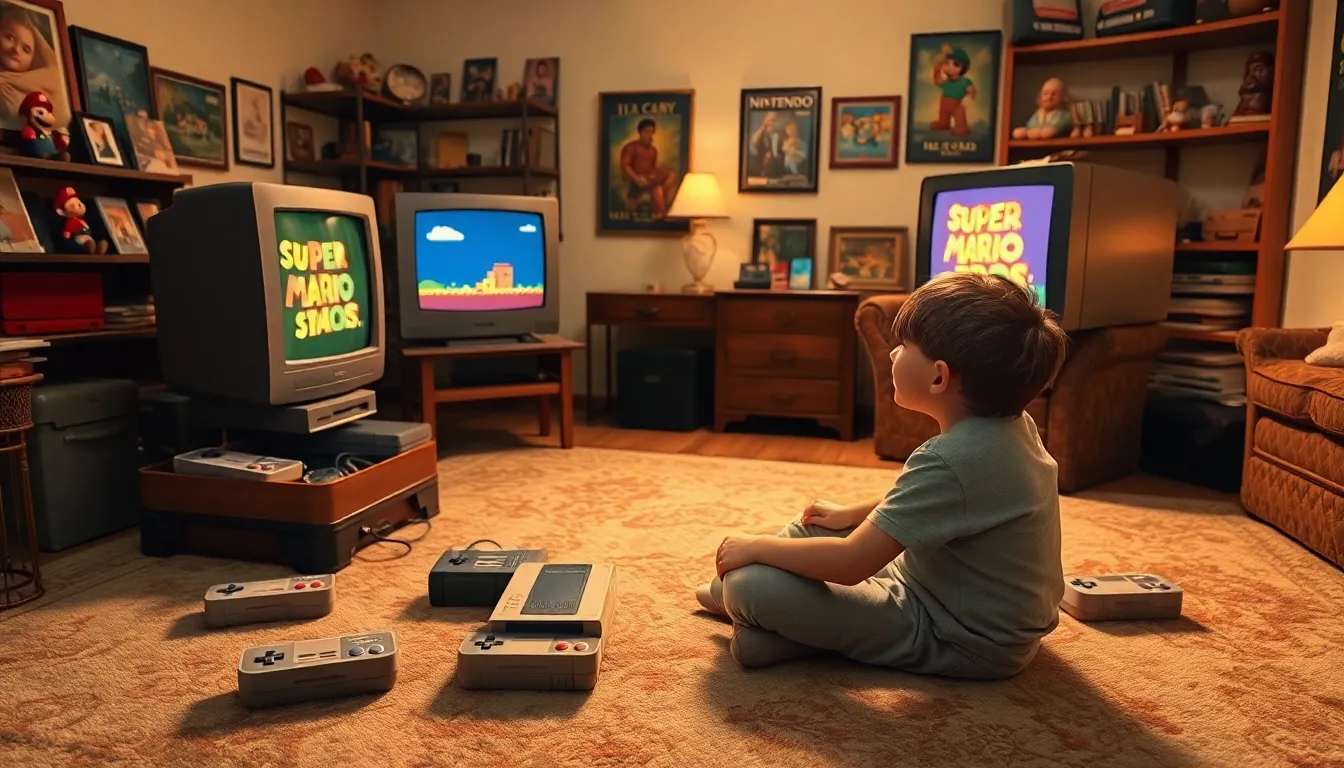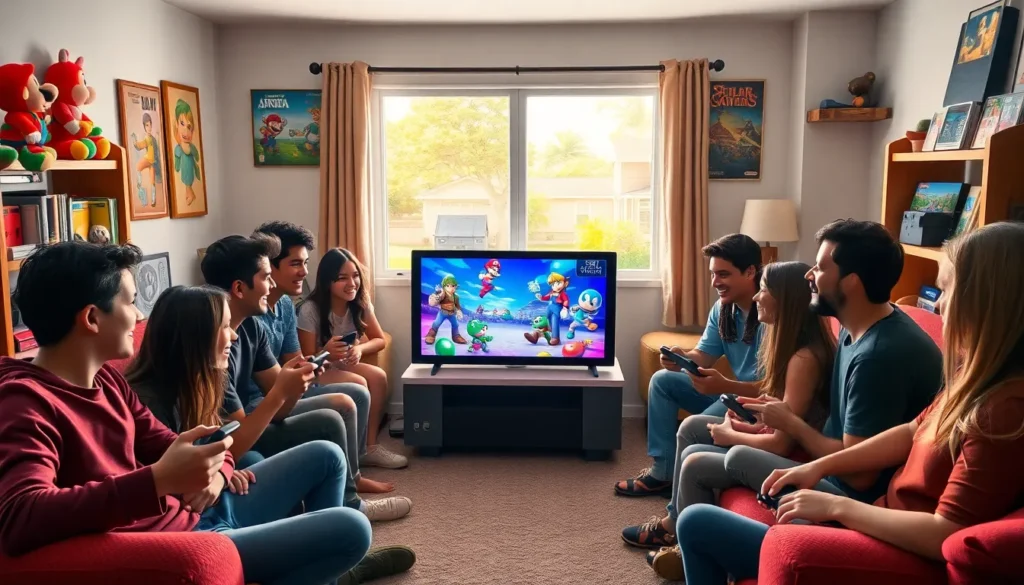Table of Contents
ToggleIn the landscape of video gaming, few names resonate as powerfully as Nintendo. Its rich heritage has influenced generations of gamers and developers alike. From groundbreaking hardware to beloved characters, Nintendo’s journey through gaming history is marked by innovation and passion. In this text, we investigate into the significance of Nintendo’s contributions, explore its key milestones, celebrate its iconic franchises, understand its influence on game design, examine the vibrant community culture surrounding its games, and share personal reflections on its lasting legacy.
The Significance of Nintendo in Gaming History

Nintendo, founded in 1889, began as a playing card company before venturing into the realm of video games in the 1970s. Its significance in gaming history cannot be overstated: Nintendo not only shaped the video game culture but also played a pivotal role in establishing the industry as we know it today. The company’s innovative approach and storytelling ability captured the imaginations of millions.
The introduction of the Nintendo Entertainment System (NES) in 1983 marked a watershed moment. Following the video game crash of 1983, the NES revitalized the industry, re-establishing consumer confidence. With iconic games like “Super Mario Bros.” and “The Legend of Zelda,” Nintendo set new standards in gameplay, storytelling, and character development. Its family-friendly branding and imaginative worlds created an inclusive environment that appealed to players of all ages.
Eventually, Nintendo’s impact goes beyond just gaming: it has influenced popular culture, inspiring movies, merchandise, and even spin-offs in various media.
Key Milestones in Nintendo’s Evolution
Nintendo’s journey is filled with numerous milestones that showcase its ingenuity and adaptability. The release of the Game Boy in 1989 revolutionized portable gaming, allowing gamers to play anywhere. This marked the beginning of mobile gaming as we know it today, making gaming even more accessible.
In the 90s, the introduction of the Super Nintendo Entertainment System (SNES) brought advanced graphics and sound, elevating gaming experiences further. Titles such as “Donkey Kong Country” used cutting-edge technology to deliver stunning visuals.
As the 2000s rolled around, Nintendo led the industry again with the launch of the Nintendo Wii in 2006, which popularized motion controls, making gaming a physical and social activity. This was a significant shift, catering to a broader audience and establishing gaming as a family pastime.
Each of these milestones reflects Nintendo’s ability to innovate and connect with players, continually redefining what gaming can be.
Exploring Iconic Nintendo Franchises
Nintendo boasts a plethora of beloved franchises, each rich with history and gameplay mechanics that have set benchmarks in the industry.
The “Super Mario” franchise, arguably Nintendo’s flagship series, introduced players to a vibrant world filled with adventure. Since its inception, Mario has become a cultural icon, leading to numerous sequels and spin-offs.
Then there are the fantastical realms of “The Legend of Zelda” series, where players embark on epic quests alongside Link and Princess Zelda. This franchise is known for its intricate puzzles and immersive narratives, leaving a lasting impact on the action-adventure genre.
Other notable franchises like “Pokémon” and “Metroid” continue to evolve and capture the hearts of new generations, making each franchise a cornerstone of Nintendo’s legacy. These series not only highlight Nintendo’s creativity but also its ability to continuously engage players with fresh concepts while retaining their core identities.
The Impact of Nintendo on Game Design and Innovation
Nintendo’s influence extends deeply into game design and innovation. The company has pioneered many concepts that have become standard in gaming. For instance, the introduction of the “save feature” in games like “The Legend of Zelda” transformed how gamers interacted with titles. This innovation allowed players to revisit their progress, enhancing the overall gaming experience.
Also, Nintendo has consistently emphasized gameplay mechanics that prioritize fun and creativity over graphics alone. The development of the “Wii Fit” and the concept of fitness games highlighted the importance of health and active engagement in gaming.
Also, Nintendo often embraces unconventional control schemes, as seen with the Wii’s motion controls and the innovative touch screen of the Nintendo DS. By breaking traditional gaming molds, Nintendo not only keeps its games fresh but also sets trends that ripple throughout the entire industry.
Community and Culture Surrounding Nintendo Games
The community around Nintendo is vibrant and eclectic, comprising gamers of all ages who share a common passion for Nintendo’s offerings. Nintendo has fostered a culture that encourages collaboration and creativity, whether through fan art, cosplay, or online forums.
Events like Nintendo Direct keep the community engaged, providing updates and sneak peeks into future games, while also celebrating nostalgiac moments from the past. Also, major conventions such as E3 often feature Nintendo in a way that creates excitement among fans, allowing them to connect over their shared love of these games.
Also, community-led initiatives have flourished, from fan games to art showcases. This strong knit community not only pays homage to Nintendo’s rich history but also actively participates in shaping its future.
Personal Reflections on Nintendo’s Legacy
For many gamers, Nintendo is not just a brand: it’s a source of cherished memories. Reflecting on one’s first experience with Super Mario or the emotional journey through The Legend of Zelda can evoke powerful nostalgia. Nintendo has a unique ability to create emotional connections that resonate deeply and create lasting impressions.
Each franchise holds distinct memories, and many can relate to the joy of gathering friends or family for a game night powered by Nintendo titles. Personal stories of triumph, collaboration, and even friendly competition emerge from the diverse experiences that Nintendo games provide.
Nintendo’s focus on family-friendly content has allowed players to introduce gaming to younger generations, fostering a sense of community that spans decades. Its games often serve as a bridge between young and old, highlighting values of cooperation, creativity, and adventure.
Conclusion
To conclude, Nintendo’s journey in the gaming landscape is not just about the games they’ve released: it’s about the impact they’ve made on culture, community, and gaming as a whole. It has inspired not only players but also developers to think outside the box and welcome innovation.
From its roots as a card company to a gaming titan, Nintendo has created a legacy that transcends generations. The company’s dedication to creating enjoyable and imaginative experiences continues to set a standard in the industry. As gamers reflect on their journeys through the worlds Nintendo has built, one thing is clear: Nintendo will always hold a special place in the heart of the gaming community.







